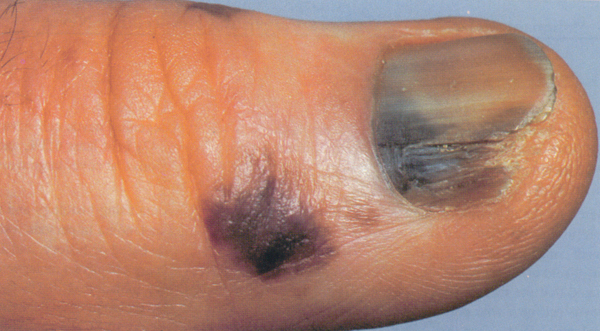Acrolentiginous melanoma is a rare subtype of melanoma, a type of skin cancer that arises from melanocytes, the cells responsible for producing the pigment melanin. This specific subtype accounts for approximately 2-3% of all melanomas in Caucasians. However, it occurs with much greater frequency in Asian and African American populations, making up 29 to 72% of all melanomas in these groups.

Acrolentiginous melanoma develops predominantly in the acral regions of the body, i.e. on the palms of the hands, soles of the feet and under the nails. Unlike many other types of melanoma, it is not associated with sun exposure and its triggers remain unknown.
In the early stages, acrolentiginous melanoma presents as a blackish-brown macular lesion that expands peripherally. Over time, a nodular component may appear, indicating “vertical” growth of the tumor—that is, growth deep into the skin. This subtype of melanoma predominantly affects older women.
Given the difficulty of detection in the early stages, it is important to consult a doctor at the appearance of any unusual changes in the nails or on the skin of the hands or feet. The diagnosis is confirmed through physical examination and biopsy of the lesion.
Treatment for acrolentiginous melanoma can vary depending on the stage of the cancer at the time of diagnosis and may include surgical removal of the lesion, radiation therapy, immunotherapy, or chemotherapy. As with all types of melanoma, early diagnosis and prompt treatment are key to improving your chances of survival.